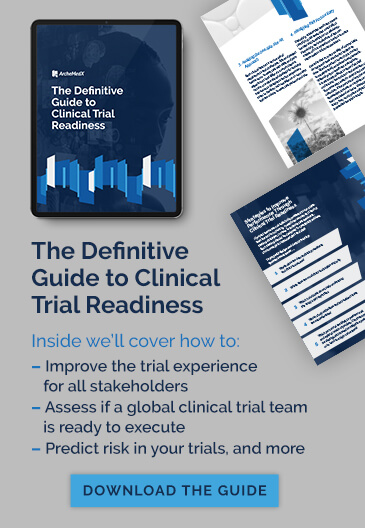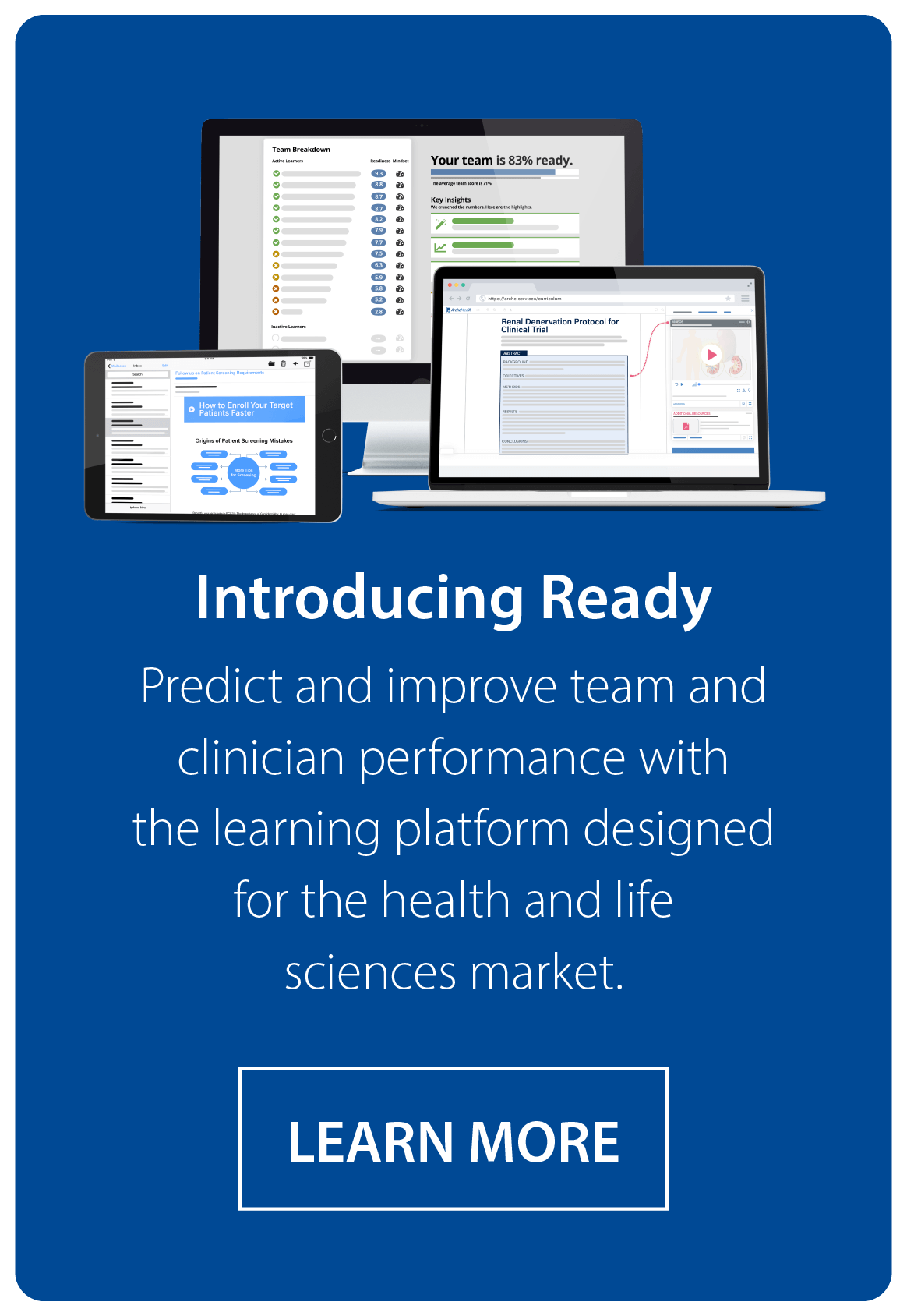When I first wrote this blog, I anticipated that 2020 would be a year that we could begin to advance the success of clinical trials for sponsors, CROs, and the patients who ultimately benefit with digital improvements to clinical trial training. Looking back, it’s incredible how that idea escalated due to COVID-19. We still firmly believe that a critical path to improving clinical trial readiness is improving your approach to training – finding a better way to train clinical site staff, trial teams, new employees, and so on. I’ve updated this blog to consider the changes we’ve undergone as an industry since January.
Traditional clinical site staff and trial team training is not a future-proof solution.
Unfortunately, training project teams and site staff to properly conduct a study rarely gets the attention it deserves and needs. This has been exacerbated by the shift of clinical trial teams to shoehorn their old training content into a virtual meeting.
First of all, the process is often rushed. This is no more obvious than with clinical site staff training – with the onset of COVID-19, most training just got pushed to a web meeting with no thought to the site staff’s ability to respond to that approach.
Secondly, our industry’s heavy reliance on a one-size-fits-all, train-the-trainer model fosters inconsistency in messaging and preparation, a problem that worsens as time passes and staff turnover. This is further complicated by a limited ability to evaluate the effectiveness of the training that is delivered.
Too often, we make the mistake of viewing training as a box that must be checked rather than as an essential component of clinical trial site initiation to conduct a successful study. We also make the mistake of acting as though training and learning happens at one moment in time, whereas in truth, it needs to be ongoing.
The impact of inadequate training is significant and far-reaching. Inadequate training and a failure to recognize the staff and sites that are not sufficiently prepared can lead to delays in site activation, screening and enrollment, and data deliverables, all of which can lead to extensive delays and drive up costs. Quality is affected when ineffective training leads to high screen failure rates, protocol deviations, and unusable data.

We must replace our old methods with scalable, individualized clinical training.
So, what should we do differently in 2020? I’ve revised this list slightly to take into account the vast changes we’ve seen across the industry this year.
- Prioritize learning and knowledge as an essential part of planning a study, not just an item on a punch list. That means that we must spend time clearly defining the learning objectives that must take place and the knowledge that must be transferred when we deliver investigator meetings and train clinical site staff. This is even more critical now that so much may be virtual, and we recently wrote in depth on this concept.
- Ensure that all training efforts generate actionable data and analytics. Doing so will help sponsors and CROs to know much more than whether or not training took place. With data and analytics at hand, clinical trial teams can more accurately determine who is well prepared to actually conduct the study and who needs more preparation. More precisely, they should know which study objectives are well understood and which need to be revisited and reinforced. Another recent article we wrote described some of these data metrics that you should add to your site selection checklist.
- Commit to ongoing reinforcement. Acknowledge that the learning required to perform at such high levels as today’s complex clinical studies require is not achieved at a single moment in time. It is, instead, a process, one that requires — and deserves — ongoing attention. More than ever, with virtual investigator meetings becoming a reality, and a need to remotely train clinical site staff training, we must battle against distractions and time gaps to ensure our trial staff is going to succeed. Fortunately, technology enables us to automate distribution of resources and content today.
Improving training is our responsibility now.
When I first wrote this blog, I didn’t expect the massive technology disruption we have faced this year. However, while the technology has been disrupted, the fundamentals haven’t. If we truly want to reduce trial timelines, and improve the speed we get new treatments to market, we must improve how we train clinical site staff, investigators, and teams. It’s a responsibility we must take on to “get it right.”
Rethinking and upgrading our approach to clinical trial readiness will deliver multiple benefits for sponsors and CROs, and prove to be well worth the investment. Collecting data and utilizing analytics will provide the means to deploy, assess and manage project teams and site staff more precisely and proactively. Better trained staff will deliver higher quality results more reliably. And, delivering high-quality results over time can readily lead to earlier decisions and lower costs for sponsors and CROs.





